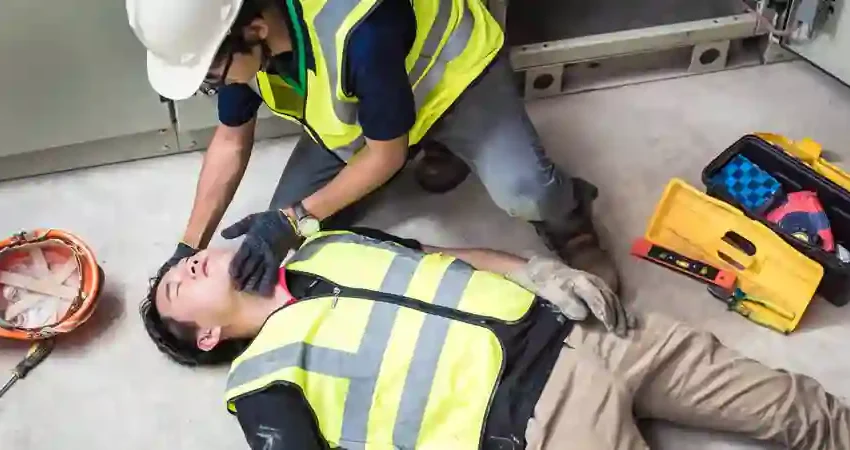
Corporate Emergency Medical Care and Swift Response
In the high-paced corporate world, emergencies are an unavoidable reality. Whether it’s a medical incident, an accident, or a natural disaster, the way a corporation responds to these emergencies can make a significant difference in outcomes, including the safety and well-being of employees, the protection of assets, and the overall resilience of the organization. This article explores the importance of corporate emergency medical care and swift response, delving into the key elements, strategies, and benefits that organizations can derive from being well-prepared.
The Significance of Corporate Emergency Medical Care
Corporate emergency medical care refers to the provision of immediate medical attention and assistance within a corporate setting. This includes addressing injuries, illnesses, and other medical incidents that may occur during work hours or on company premises. The significance of corporate emergency medical care cannot be overstated for several reasons:
- Employee Well-being: The well-being and health of employees are paramount. Swift medical attention can prevent the exacerbation of injuries or illnesses and even save lives.
- Legal Compliance: Many jurisdictions require organizations to have specific measures in place to address workplace injuries and emergencies. Compliance with these regulations is not only essential but also a legal obligation.
- Asset Protection: In certain industries, equipment, and assets can be highly valuable. Prompt medical care can prevent damage to assets, thus reducing potential financial losses.
- Reputation Management: An organization’s reputation can be significantly impacted by how it responds to emergencies. Demonstrating a commitment to employee health and safety enhances the organization’s image.
Key Elements of Corporate Emergency Medical Care
To establish effective corporate emergency medical care, organizations should consider the following key elements:
- First Aid Training: Ensuring that employees, especially designated first-aiders, are adequately trained in first aid techniques such as CPR (Cardiopulmonary Resuscitation), wound management, and the use of Automated External Defibrillators (AEDs).
- Emergency Response Plans: Developing clear and comprehensive emergency response plans that outline the procedures to follow in various emergency scenarios, including medical incidents, fires, natural disasters, and security threats.
- Accessibility to Medical Supplies: Maintaining well-stocked first-aid kits and AEDs at easily accessible locations throughout the workplace.
- Communication Protocols: Establishing efficient communication channels to alert employees, security personnel, and emergency services when an incident occurs.
- Mental Health Support: Recognizing and addressing mental health emergencies, including stress, anxiety, and emotional crises, by providing access to counseling or crisis intervention services.
Strategies for Implementing Corporate Emergency Medical Care
- Training and Drills: Conduct regular training sessions and emergency drills to ensure that employees are familiar with emergency procedures and can respond effectively in real-life situations.
- Employee Awareness: Create awareness campaigns to educate employees about the importance of emergency medical care and how they can play a role in responding to emergencies.
- Emergency Response Teams: Designate and train specific employees as emergency response team members responsible for handling medical emergencies and coordinating responses.
- Integration with Safety Culture: Incorporate emergency medical care as an integral part of the organization’s safety culture, emphasizing the value of health and safety for all employees.
Challenges in Implementing Corporate Emergency Medical Care
While the benefits of corporate emergency medical care are clear, there are challenges that organizations may face in its implementation:
- Resource Allocation: Allocating sufficient resources, including time, budget, and personnel, for comprehensive training and equipment procurement can be challenging, especially for smaller organizations.
- Employee Participation: Encouraging widespread participation in training sessions and drills, especially in large and diverse workforces, can be difficult.
- Maintaining Skills: Ensuring that employees retain their emergency response skills over time necessitates regular refresher training.
- Balancing Swift Action with Safety: Training employees to respond quickly yet safely, balancing urgency with caution, is crucial.
Benefits of Corporate Emergency Medical Care
Implementing effective corporate emergency medical care offers numerous benefits to organizations, including:
- Enhanced Employee Safety: The primary benefit is the safety and well-being of employees, which is the top priority for any organization.
- Reduced Severity of Injuries: Swift medical care can significantly reduce the severity of injuries and illnesses, leading to faster recovery times.
- Compliance with Regulations: Ensuring compliance with workplace health and safety regulations and legal requirements reduces the risk of fines and legal liabilities.
- Improved Reputation: A commitment to employee health and safety enhances an organization’s reputation, making it an attractive employer and partner.
- Operational Resilience: Organizations with well-prepared emergency medical care systems are more resilient in the face of crises, ensuring minimal disruption to operations.
The Role of Leadership in Corporate Emergency Medical Care
Leadership plays a pivotal role in driving the success of corporate emergency medical care initiatives. Leaders must:
- Champion the Cause: Actively promote and endorse emergency medical care programs, emphasizing their importance to the organization.
- Allocate Resources: Ensure that adequate resources are allocated for training, equipment, and the development of emergency response plans.
- Lead by Example: Leaders should actively participate in training and drills, setting an example for their teams and reinforcing the importance of emergency preparedness.
Conclusion
Corporate emergency medical care and swift response are indispensable components of modern corporate responsibility and safety. By investing in comprehensive training and preparedness, organizations not only protect their employees but also safeguard their assets and reputation. A culture that prioritizes health and safety not only complies with regulations but also fosters a workplace environment where employees feel valued and protected. In today’s fast-paced business landscape, being prepared for emergencies is not just a precaution; it’s a strategic imperative that ensures the well-being and resilience of the organization as a whole.

